We are pleased to announce that a new finding aid in our Children’s Literature collection is now available on Archives West.
The Cornelius DeWitt papers (Ax 347) are primarily composed of original illustrations created for children’s books. Also represented in the collection are dummies, sketchbooks, proofs, personal and travel artwork, correspondence, and production notes.
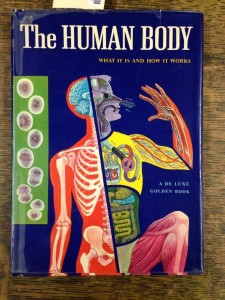
Figure 1 – The Human Body
Cornelius Hugh DeWitt (1905-1995) was a German-born children’s book illustrator and illustrated numerous books for publishing houses such as Golden Books and Western Publishing in the mid-twentieth century. Illustrations of the sciences feature heavily in DeWitt’s illustrated publications including works on ethnography, anthropology, biology, geology, geography, and physics. Some notable publications on these themes include The Human Body (1959, Figure 1), The Golden Geography (1952), and the Regions of America series (such as The Story of the Mississippi). DeWitt was also a contributor to one of Golden Books largest and most financially successful publications, The Golden Encyclopedia (published in multiple editions with various editors from 1946-1988).
DeWitt’s biological and geological illustrations in the collection highlight the challenge of presenting scientific knowledge to children while retaining enough simplicity for a young reader to enjoy the book and its pictures.

Figure 2 – Planet Earth
These illustrations illuminate the history of children’s book illustrations as well as the endeavor to bring digestible scientific information to children. The rigors of scientific review and revision are not lost even in this simplified state of illustration. In Figure 2, a mock-up layout of Planet Earth (1963) shows a typewritten editorial note above the text showing that it may need revisions due to current developments in the field. DeWitt and his publishers consulted with professionals (such as several medical doctors credited in The Human Body) in order to provide the most accurate illustration possible while remaining appropriate for the publication’s audience.
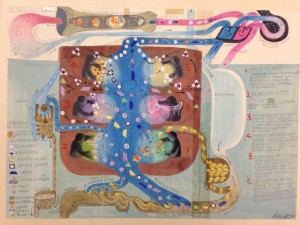
Figure 3 – The Human Body
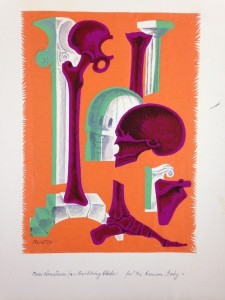
Figure 4 – The Human Body
The balance of accuracy and child’s interest and understanding is challenging and the illustrations in this collection demonstrate how this type of scientific illustration differs from advanced textbook illustration. In works such as “The Liver as Laboratory” (Figure 3) and “Bone Structures as Building Blocks” (Figure 4), DeWitt combines complex scientific concepts with simplified visual metaphors, such as the bones of the human body compared to supportive architectural structures. These scientific publications often reveal a particular moment in scientific history, like this final page layout of Rain and Shine describing the anticipatory moment before human space travel in Figure 5. Figure 5 also exemplifies an illustration style DeWitt frequently used: collage pieced together of finely cut paper.
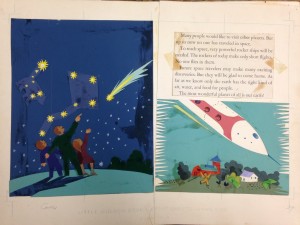
Figure 5 – Rain and Shine
Additionally, DeWitt provided illustrations with a similar tone of accuracy and visual delight to the Regions of America series. This series, published by Western Publishing, depicted the landscape, people, and customs of different regions in North America. DeWitt and various authors produced at least 10 books in this series, including titles such as The Story of the Southwest (1948) and The Story of the Great Lakes (1942). However, correspondence in the collection reveals that the series was cut short due to high costs from printing the multi-color lithograph plates and many unpublished illustrations for the series can be found in the collection. DeWitt produced many sketchbooks, both in ink and graphite, for the various regions as he studied and prepared for the final illustrations (Figure 6).
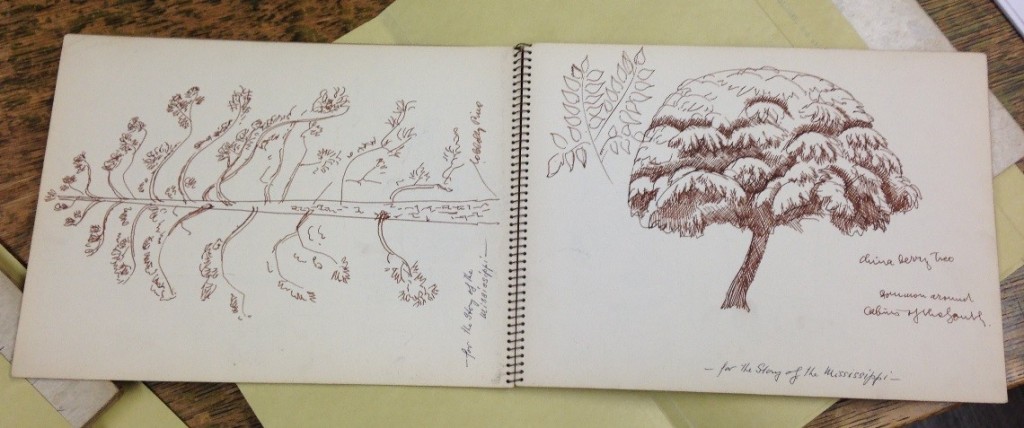
Figure 6 – Sketches of flora for The Story of the Mississippi
Both these bound preparatory sketchbooks, final watercolor illustrations, and lithograph proofs for Regions of America can be found in the collection. DeWitt also included some illustrations and proofs with editorial notes in his own hand to convey his process of illustration for these books. Figure 7 shows, on top, the original watercolor and gouache illustration for The Story of the Great Lakes. On the bottom left is a hand-proofed print pulled by DeWitt and on the bottom right is the final machine-printed lithograph that represents the illustration as it would appear in the final publication. Here is possible to see how detail and color might shift from the original intention of the author to its final appearance in print.
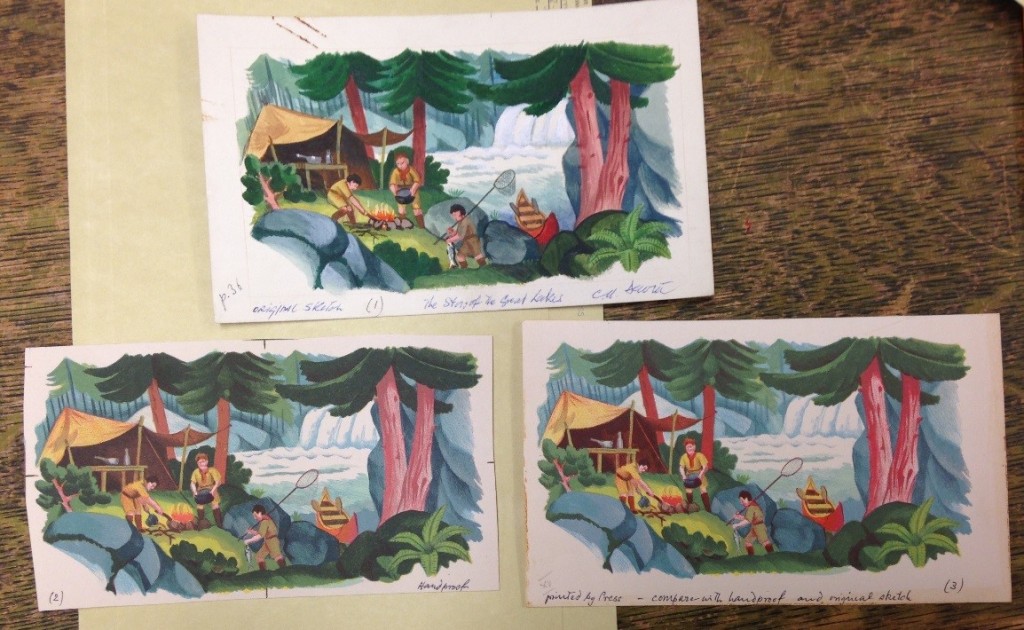
Figure 7 – Comparative illustrations for The Story of the Great Lakes

Figure 8 – The Golden Geography
In addition to these children’s works on biology and ethnography, DeWitt illustrated ethnographic maps (Figure 8) and narrative histories which further demonstrate his work in non-fiction children’s literature. The collection also includes some additional artworks produced by DeWitt not intended for children’s literature. These are represented by drawings produced for Ivanhoe (these were submitted to a contest, for which he received Honorable Mention), Les Mis, and some relief prints for Djinns and Bitters (not used). DeWitt and his wife traveled extensively through Europe and the collection also includes many artworks he produced during these travels.
Access to the Cornelius DeWitt papers will allow for greater research in the study of children’s literature and the development of illustrated science. Most importantly, however, the collection brings the artistry of Cornelius DeWitt to the public.
Additional artwork and correspondence related to Cornelius DeWitt at UO can be found in the Lucille Ogle papers (Coll 201).
A brief bibliography of published titles (with call numbers) featuring DeWitt’s illustrations held in University of Oregon’s Special Collections and University Archives follows:
The Body in Action (Ogle 3085)
The Christmas Treasure Book (Ogle 2476)
The Giant Golden Encyclopedia (Ogle 4616x)
The Golden Encyclopedia (Ogle 4617x)
The Golden Geography (Ogle 4935x)
The Golden History of the World (4934x)
A History of the United States for Young People (Ogle 4891x)
The Human Body (Ogle 3106)
Johnny’s Machines (Ogle 0127)
The Little Golden ABC (Ogle 0183)
My First Geography of the Pacific (Ogle 4889x)
Rob Whitlock: A Pioneer Boy in Old Ohio (Ogle 2138)
The Story of Alaska (F904.3 .L36 1940)
The Story of California (Ogle 4775X)
The Story of the Great Lakes (Ogle 4500x)
The Story of the Mississippi (F351 .M125 1941)
The Story of the Southern Highlands (Ogle 5229x)
The Story of the Southwest (Ogle 5230x)
They Went Exploring (Ogle 4892x)
What Am I?: A Picture Quiz Book (Ogle 0104)
No appointment is necessary to view the collection, but checking the calendar of current hours is recommended.
By Alexa Goff, Student Processing Assistant


Extremely interesting article.
Might the papers be published at some time in the future?
Thanks Graeme- the finding aid is available here: http://archiveswest.orbiscascade.org/ark:/80444/xv57571/op=fstyle.aspx?t=k&q=dewitt&f_repo=oru
We don’t plan to digitize his papers in the near future, but you can request scans: https://library.uoregon.edu/special-collections/rates
Hi Alexa,
Thank you for this fascinating article on C.H. Dewitt and the collection there. Do you have a portrait or photography of Mr. DeWitt at all?
I am republishing his The Story of California and would love to include it in the bio at the back of the book. Thank you, Rea Berg
Hi Rea,
Unfortunately, I am not familiar with any portraits of the DeWitt in our collections.
Hi, I’m just seeing this for the first time. I’m Cornelius’ grandson. I have photos of him along with additional original drawings, sketches etc. feel free to email me if this is of interest. Thank you. John Daily
Zagnut12@verizon.net
Hello,
As a children’s book collector for 30 years, Cornelius DeWitt’s illustrations have long been in my top favorites, hence my offer: I have a rather shabby copy of the map of the world which was issued with The Golden Geography of the World. I would like to donate it to this collection, if you want it. The map is clumsily laminated.
Hi Amy,
Feel free to reach out to a curator to discuss this inquiry on our website.